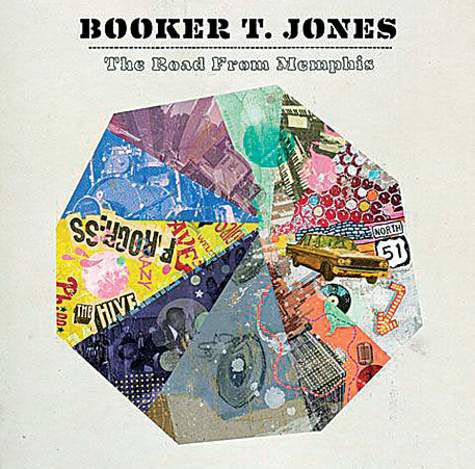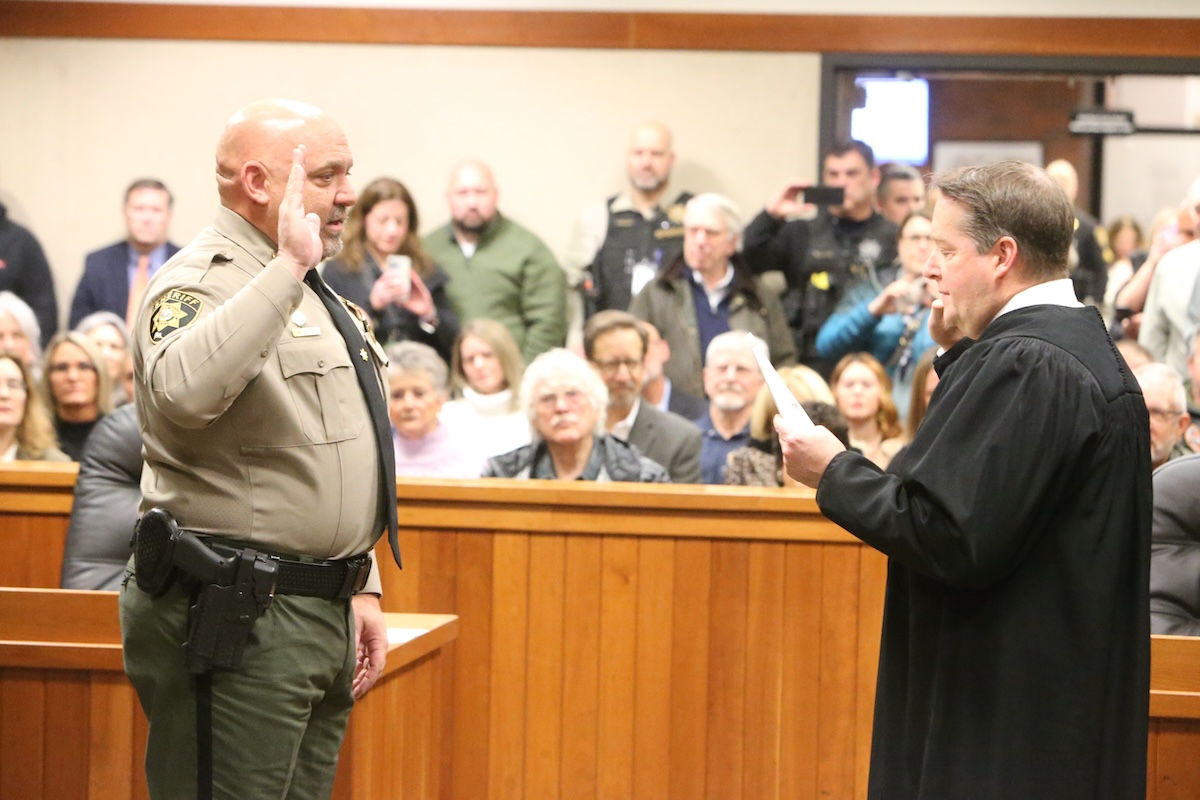Music releases
Published 5:00 am Friday, May 27, 2011

- July 19-21 — McMenamins Old St. Francis School, Bend, www.mcmenamins.com
Brad Paisley
THIS IS COUNTRY MUSICArista RecordsBrad Paisley seems like a nice guy. And there’s nothing wrong with his catalog of nice country hits.
But on “This Is Country Music,” Paisley takes the country Everyman thing a little too far. It’s not just the false fights he drums up in the pandering title track, where he declares, “It ain’t hip to sing about tractors, trucks, little towns or mama — yeah, that might be true. But this is country music and we do.” And it’s not just the subtle digs at Sinatra and Barry White’s mood-setting abilities in his current single “Old Alabama.” It’s a feeling that runs through the whole album.
Even more cloying are Paisley’s attempts to be cleverer-than-thou. The twist ending to “Toothbrush” just makes the aw-shucks idea (“Love starts with a toothbrush, a Bic razor and a Dixie cup”) too cutesy. “Be the Lake” — where he fantasizes, “Wish I could be the beach towel that you lay down on or the two-piece fitting you so right it’s wrong” — gets a touch creepy. It’s too bad, really, because when Paisley gets things right, he’s stunningly good. “Remind Me,” his poignant country-rock duet with Carrie Underwood, may be one of the best country songs of the year. The bluegrass-tinged “Life’s Railway to Heaven,” with Marty Stuart, Sheryl Crow and Carl Jackson, is a musical treat, while “One of Those Lives” is a lyrical one.
But Paisley ends up crowding out those high points, which sells “This Is Country Music” short.— Glenn Gamboa, Newsday
Lady Gaga
BORN THIS WAYInterscope RecordsLady Gaga is the perfect vessel for a broad message of unity, defiant self-respect and personal liberty, themes that the pop star returns to over and over again on “Born This Way,” her new album that came out this week. The artist born Stefani Germanotta is writing music for the People of the World, so her message needs to be clear as she stands perched upon the massive, gaudily ornate platform she and her collaborators have constructed for this moment.
But the inclusiveness Gaga believes so strongly in apparently doesn’t extend to music fans interested in sonic open space, unfiltered vocals and surprising rhythms, bridges and hooks. She’s speaking to everyone, it seems, except fans of artistic innovation. Say what you want about Lady Gaga, but nuance is not one of her strong points, nor is musical adventure. She’s unsubtle in her message, unsubtle in her dress, and, most important, unsubtle aesthetically.
“Born This Way” is Gaga’s second proper full-length work (excluding her eight-song EP of 2009, “The Fame Monster”). Two years in the making, the album’s 14 songs can be divided into two categories: the dance floor bangers and the bedroom breathers. The former, of which there are a dozen, tend to merge into one mass of pounding after about a few songs, drawing as they do from the worst tendencies of the last decade of dance music.
There are interesting moments. The bridge on “Judas,” when Gaga steps back and allows producer RedOne to wave his freak-flag with bleep-and-burp digital effects and futuristic washes for a too-quick breakdown, is wild and inventive. But then the 132 beats-per-minute pound comes in, and dynamism is once again merged by synthesizer bursts, cheesy saxophone riffs and guitar solos.
And the best song on the album, the Robert “Mutt” Lange-produced “You and I,” is a gorgeous love song that stands a good chance of being an “American Idol” staple for years to come.
If Gaga had only spent as much time on pushing musical boundaries as she has social ones, “Born This Way” would have been a lot more successful.— Randall Roberts, Los Angeles Times
Thee Oh Sees
CASTLEMANIAIn The Red RecordsThee Oh Sees perch comfortably atop a vibrant Bay Area garage-rock scene. It’s a spot they’ve earned for a number of reasons: seniority (the band has been bashing since 2005, and head Oh See John Dwyer fronted primal pounders the Coachwhips before that); an inhuman prolific streak (being an Oh Sees completist is like being a member of a fabulous record-of-the-month club); and the simple fact that the band is one of the best live acts on the West Coast, East Coast or anywhere in between, delivering a blur of hip-shaking, revved-up mayhem every time it’s on stage.
Many bands in today’s indie world would take this combination of factors and attempt to capitalize on it with a breakthrough album that cleans up and streamlines all of the elements working in their favor. Thee Oh Sees are not many bands. “Castlemania” is a whimsically absurd collection that has more in common with British avant-garde weirdos Bonzo Dog Doo-Dah Band than garage-rock standard-bearers the Sonics.
Maybe it’s a conscious effort to create distance from the increasingly generic garage tag, or maybe the band was just in the mood to rip it up and start again. Listening to Thee Oh Sees is always fun, but “Castlemania” is actually funny. “Castlemania” might not be the easiest entry point into Thee Oh Sees’ catalogue.— David Malitz, The Washington Post
Town Mountain
STEADY OPERATORPinecastle RecordsPinecastle Records, one of the heavy hitters among the small bluegrass labels from 1989 to 2010, is back. The label shut down in February 2010 because of the declining health of its owner, Tom Riggs.
But Lonnie Lassiter acquired the label last August and issued his first album — Town Mountain’s “Steady Operator” — this month. Producer Mike Bub describes the album as “a colorful pallet of bluegrass, blues, ballads, breakdowns and Bible” and says it features “passionate, original bluegrass played by tradition-minded, in-tune hipsters from the mountains of western North Carolina.”
The Asheville, N.C., quintet has been described as “a bridge between traditional bluegrass, outlaw country and old-time, with sounds reminiscent of Hank Williams, Bill Monroe, J.D. Crowe and Tony Rice.”
You could also say Town Mountain is sort of Hank Williams meets Bill Monroe with more than a touch of rockabilly attitude. “Steady Operator” is filled with original songs.
Mandolin player Phil Barker wrote or co-wrote six songs and banjo player Jesse Langlais wrote three. The other three are the traditional instrumental “Flannery’s Reel,” Aaron Wood’s “All You Despise” and Hank Williams III’s “Five Shots of Whiskey.” Williams has a way with lyrics like his grandfather — “They weren’t good times, but they were the best of my life.”
Good album by a band that’s rapidly making a name for itself. Can’t find it in stores? Try www.PinecastleMusic.com.— Keith Lawrence, Owensboro Messenger-Inquirer
Colin Vallon Trio
RRUGAECM RecordsWith its courtly, somber beauty and its soft, steady luminosity, “Rruga” projects a specific set of jazz protocols: that of the young Northern European piano trio, probably recording for the ECM label. As it happens, this is the handsome ECM debut of the Colin Vallon Trio, whose members are all in their 30s — but Swiss.
So that’s two out of three for blind presumption. In fairness, though, this trio’s namesake pianist titled one track “Eyjafjallajokull,” after the Icelandic volcano; another track, by the bassist Patrice Moret, is actually titled “Fjord.” Only with closer investigation does another region, the Balkans, lay a deeper claim here. “Rruga,” a piece by Vallon that appears in two versions, is the Albanian word for path. It draws distantly from Turkish folk forms, as does “Meral,” another of his tunes. “Iskar,” a collective invention, has a shadow foothold in Bulgarian vocal music.
You might not hear those reference points without a tip-off because the group subsumes everything in its even-tempered sound. Vallon, Moret and the drummer Samuel Rohrer have been working as a trio for the last six years, and their cohesive powers, which are undeniable, seem to be moving them in the direction of rippling composure. You hear beautiful technique, but not much in the way of virtuosity.
Vallon’s approach to pianism suggests both classical training and a fondness for crescendo-driven art-rock, and the hovering way he drives this group can evoke the original, premillennial Brad Mehldau Trio. But the thrust of the material and the searching quality of much of the playing point in other directions. You can only hope for a trio of this promise that one of those directions is forward.— Nate Chinen, The New York Times






